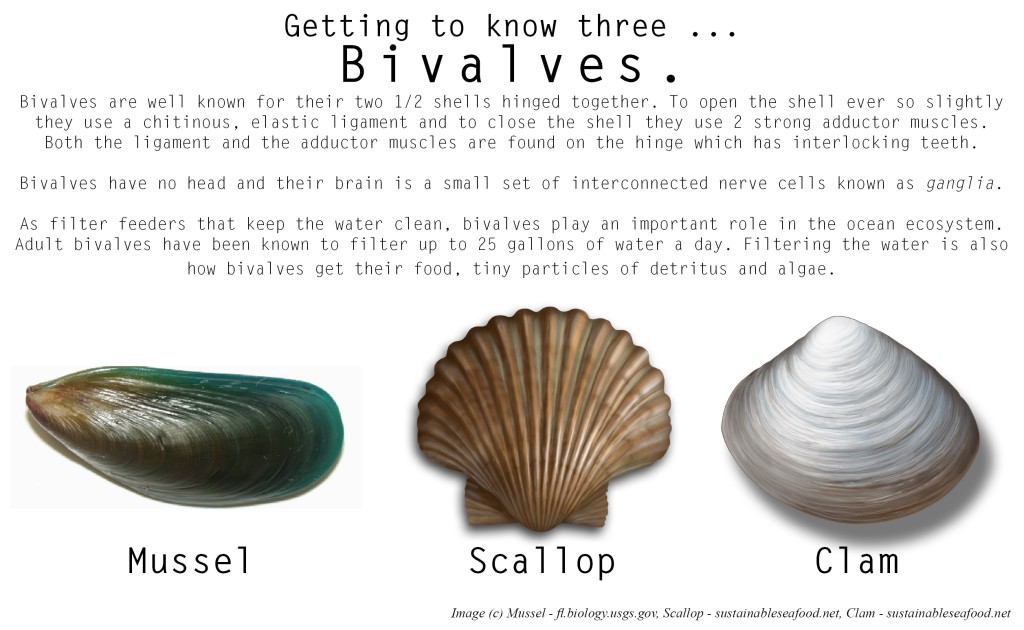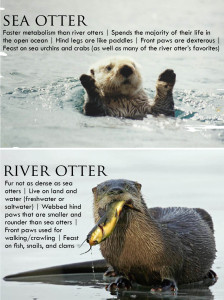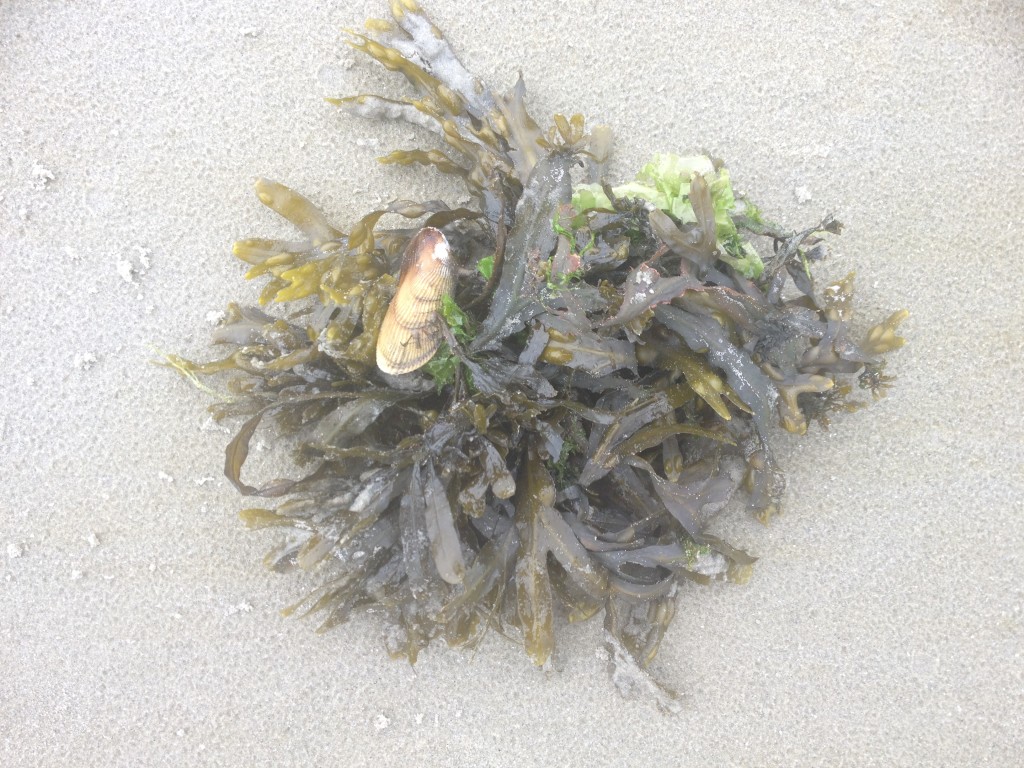Ever know instinctively that some animals are ‘related’ and just can’t pinpoint their similarities? On the third day of every month I explain three features that are common among three animals of a certain group. Of course, generally each group has more than three representatives and even many more similarities and then even more differences, but I am going to choose three similarities that link threes to keep it simplified. This month is focused the mussel, scallop, and clam. These three animals are all part of the bivalve group which is the second largest group of mollusks. The largest group of mollusks are the gastropods. Mollusks are well-known for their soft, unsegmented bodies and shell covering (although cephalopods do not have this feature). Check out the image below to learn what the featured animals all have in common.
















What people are saying …